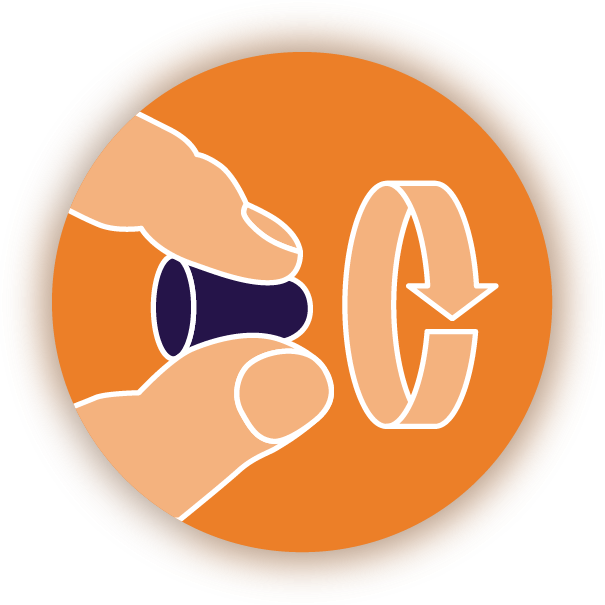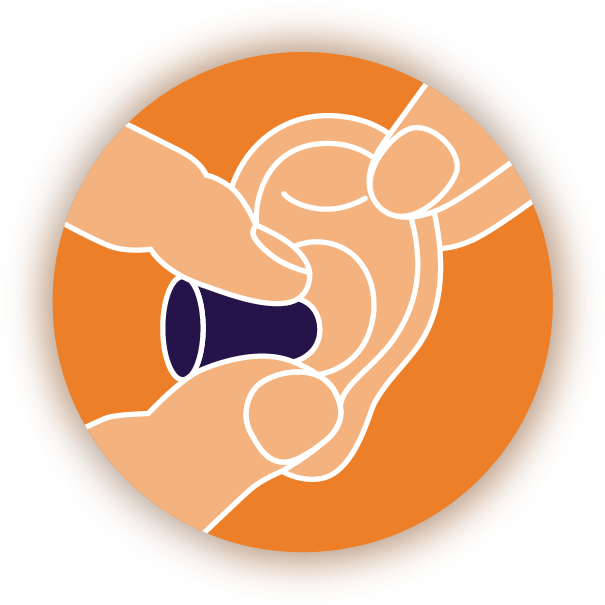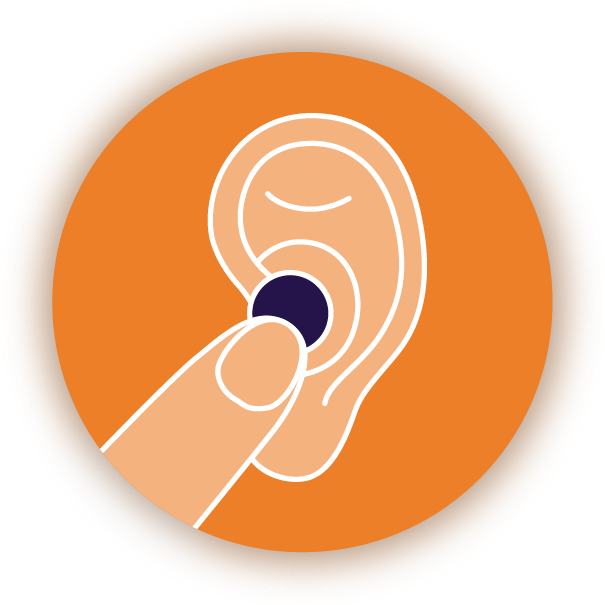Ver pagina en: English | Español
Let’s Listen Responsibly
To protect our ears, let’s follow “a sound diet”: turning it down when we can, being aware of our daily sound dose, taking quiet breaks to rest our ears, and carrying and using earplugs when we need to.
There are three factors affecting how and when noise will affect hearing, according to the National Institute on Deafness and Other Communication Disorders.
We can remember them as the “3 D’s”:
Decibels: how loud or intense the sound is
Duration: how long we are exposed to the sound
Distance: how close we are to the sound
When using personal listening devices, aim for 50 to 60 percent of the maximum volume for 60 minutes at a time. Let’s rest our ears and periodically remove headphones or earbuds, or be in quiet after a concert, just like we rest our eyes from looking at screens or our muscles after a workout.
The goal isn’t to avoid loud events entirely, but to live a balanced hearing life to benefit our overall well-being.
Volume Down
Listen to personal audio devices at a volume level at 50 to 60% of maximum.
Balance
Volume level and length of listening need to be balanced. The longer you listen, the lower the volume should be.
Monitor
Use smartphone apps to monitor your sound exposure. Choose devices with built-in safe listening features.
Fit Matters
Use over-the-ear (and, if possible, noise-canceling) headphones. Over-the-ear models create a better seal to block out ambient sounds.
Hear the World
Take listening breaks, at least once an hour from personal audio devices. Enjoy the quiet and sounds around you!
Which Earplugs Are Best?
Spoiler alert: The best earplugs are those we have readily available, find comfortable, and actually wear when needed.
Earplugs are a simple, effective way to reduce noise exposure and protect hearing. There are so many styles and types available, at various price points, and with many reusable. So just like we may have many pairs of sunglasses ready to use, let’s keep a pair or two everywhere we might need them—in our bag, on our key chain, in our glove compartment.
Earplugs are inserted into the ear canal and can help prevent hearing loss and tinnitus from loud noises. A 2016 study showed that when used correctly earplugs had a noise reduction rate of 18 decibels and were effective in preventing premature hearing loss and ringing in the ears.
According to the Hearing Professionals of Illinois, ear protection needs to be worn when you are at risk of being exposed to loud noises. This includes at concerts or when playing music, when using power tools like lawn mowers, and when living or working in a noisy area, like near a construction site or busy traffic areas.
Earplugs 101
The “NRR” number on a package of earplugs indicates the noise reduction rating. The higher the number, the more decibels it reduces. But if the NRR is too high for your sound environment, we’re more likely to take the earplugs out (and maybe lose them in a dark nightclub!), so try out a few and see what works for different settings.
Disposable foam earplugs are the least expensive and most readily available at any drugstore. Consider keeping a stash in your bag or car just in case, and make sure to roll it to fit into your ear canal (see instructions above).
Some higher-end earplugs come with different ear tips for varied sound environments. For frequent concert-goers or those who work in noisy environments, like a bar, consider musicians’ (high fidelity) earplugs.
For some reviews of earplugs, see:
The National Institute on Deafness and Other Communication Disorders (NIDCD) reviews hearing protectors.
Hearing Health Foundation’s Eight Pairs of Earplugs in Four Noisy Settings: My Hearing Protection Experiment has a personal take and ratings on earplugs.
The Noisy World blog has an in-depth review of different types of earplugs with advantages and disadvantages.
Earplug Hygiene
While custom-made earplugs have a longer lifespan, foam earplugs are suitable for one-time use and need to be discarded as they are prone to dirt and quick bacterial infestation.
Reusable earplugs may be washed in mild soap and warm water and allowed to air dry.
The 3M comprehensive guideline has instructions on how to clean, inspect, and maintain hygiene for different types of ear protective devices.
Clean hands thoroughly before handling the earplugs.
Store reusable earplugs in a clean, dry place.
Even though some research shows that wearing earplugs during sleep can improve quality of sleep, prolonged use of earplugs may cause the buildup of earwax or push earwax deep inside the ear canal, which can lead to problems including ear blockage, itching, temporary hearing loss, tinnitus, and ear infection.
What Else Can We Do About Noise?
Stop
the noise (or it can't hurt to ask politely)
Block
the noise with earplugs
Walk Away
sometimes the best and easiest thing to do
Keep It Low
be mindful of the volume on your devices
In addition to the music we listen to, we’re also exposed to everyday sounds that can be dangerously loud. The New York Times recently summarized the harm to our overall health from environmental noise.
For noise that we can address, such as the neighbor’s gas-powered equipment, we can stop, block, and walk away, while also keeping our own volume that we can control within safe limits.
Hearing conservation is a healthy habit for every stage of life because once it’s gone, it’s gone. So if it sounds too loud, it is too loud.
We want you to keep listening, safely.
Reviewed in July 2023 by Rohima Badri, Ph.D.




